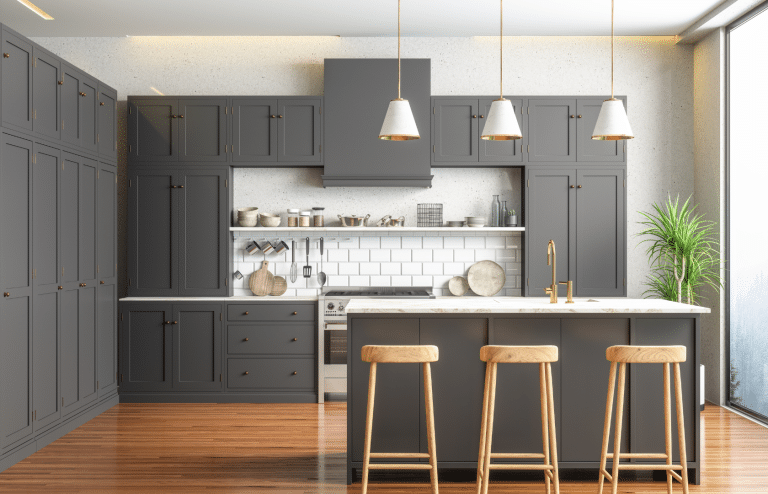Method For: Systems That Work
As an Amazon Associate and member of other affiliate programs, I earn from qualifying purchases.
Last week I wrote about why you need systems and this week I’m focused on what makes a system effective and durable. A system is simply a framework of processes that lead to something getting done. The word sounds kind of fancy but it isn’t really. You can have a system for keeping your pantry stocked, keeping track of your digital photos or paying your bills each month. You may not think you need systems for ordinary things you do in your daily life but a little bit or organization around the habits that make up seemingly mundane routines can have an outsized impact on your quality of life. That said, you only get the impact if the systems are good!
The success or failure of a system is directly tied to the quality of the processes that make it up. So how do you ensure quality processes? By following the 3 guiding principles I’ve outlined below.
keep it simple
Let’s create a system for your vitamin regimen
Sometimes when people set out with big ambitions to get organized they create elaborate plans that involve lots of steps and are ultimately foiled by complexity. Complexity is the mortal enemy of effective systems, and is usually the cause of failure. Keeping a system simple means it doesn’t have very many steps and can be tweaked and improved upon without a lot of effort.
Let’s use taking your vitamins and medications as an example. Maybe you don’t think of this activity as a target for an effective system? Raise your hand if you are taking vitamins and medications for an important reason. Now keep your hand up if you sometimes (or often) forget to take them. If your hand is still up you could benefit from a simple system. We are going to design a system to get you on the path to daily vitamin consumption and it only has 3 process steps.
Step 1 Find the vitamins a home in a place where you have easy access to water and food – that’s right, move them (out of the bathroom!) to the kitchen. When you place items in a room where the activity they are associated with (in this case, drinking) is most likely to happen you improve your chances of success tenfold.
Step 2 Give the bottles a visible spot where you can easily see them. (Don’t like unsightly mismatched bottles? I have a fix for that and you can read about it here. Or here.) When you make things obvious, they are less likely to escape your notice and thus you have a better chance of taking them. You also improve the probability that you will procure a refill before you run out. So put those suckers on a pretty tray and see how long you can go without missing a day.
Step 3 Take your vitamins. Hopefully this step does not require explanation.
This may seem like a simple example but that is kind of my point. By being thoughtful and intentional about the things that happen in your home and life (or the things that you want to happen) you are actually creating systems. And the simple ones work best.
follow traffic patterns
For the best results, follow the traffic!
Traffic patterns exist in every home, no matter how many people are living there. If children are involved many of the traffic patterns are highly visible in the form of clothing, toys and food that travels in and out of the house and from room to room.. We often don’t think of these trails of crap as traffic patterns but if you start to pay attention you can really learn a lot about how and why things move around in your house. What are the things you are constantly returning to the room they belong in? What are the categories that most often end up lining the staircase? Why does everyone have such a hard time hanging up their stuff?
The second key to a successful organization system is to follow existing traffic patterns. Go with the flow and you will be rewarded. A great example of this principle is a system for corralling the ‘Home From School’ trail of crap. Start from the beginning, where are you and your small people entering the house? From the garage? The front door? The back door? Whichever is the most-used entrance to your home is the starting place for your system and yes, if your mudroom is located somewhere far away from that entrance it will not figure into your system. Next, what happens with shoes? Do they get kicked off immediately or make their way to another room? What about backpacks? Do they end up on the floor despite the nice hooks waiting for them on the wall? Do they they get dragged off to a bedroom where they are emptied on the bed? Every family has a slightly different dynamic but the first crucial step is to understand what is happening naturally, without a system in place. Do they dump everything on the floor as soon as they enter? Then that is where you should have a bench, shoe storage & potentially hooks. Do they tear off to their rooms right away? Then maybe the system you set up is in their bedrooms. Do they do homework right away in the kitchen? Then use that as a starting place. If you design your system around what is already happening the trail of crap will be a thing of the past (at least the one that happens when they get home from school.)
Think about other traffic patterns in your house, focus on patterns. The ones that happen a lot can give your really good clues to a good system design.
invite engagement
Bring your people into the design process by getting their perspective up front
Systems would be really easy to follow if the only person you had to worry about following them was you! But alas, many of us live with other people who unintentionally foil our best laid plans. In order for a system to be effective and sustainable you need buy in from your people. One way to get buy-in is to involve spouses and kids in the development of the system. What does that look like? Asking them questions about their habits is a great place to start. People love to talk about themselves and are often eager to help when they know you are taking their perspectives into consideration. Kids especially are often interested in what you are trying to accomplish and feel invested in the outcome. In my work with clients there is often a goal of organizing a place where arts and crafts happen. When we bring them into the process they are not only delighted with the system but are eager to maintain it (for a while anyway!)
Getting your people involved leads to quality systems and the ability to keep them going long after implementation. Put their feedback through your existing filters of simplicity and following traffic patterns and you will be well on your way to a beautifully tidy and functional home environment!











Method Seattle Comment Policy
We welcome relevant and respectful comments. Off-topic comments may be removed.